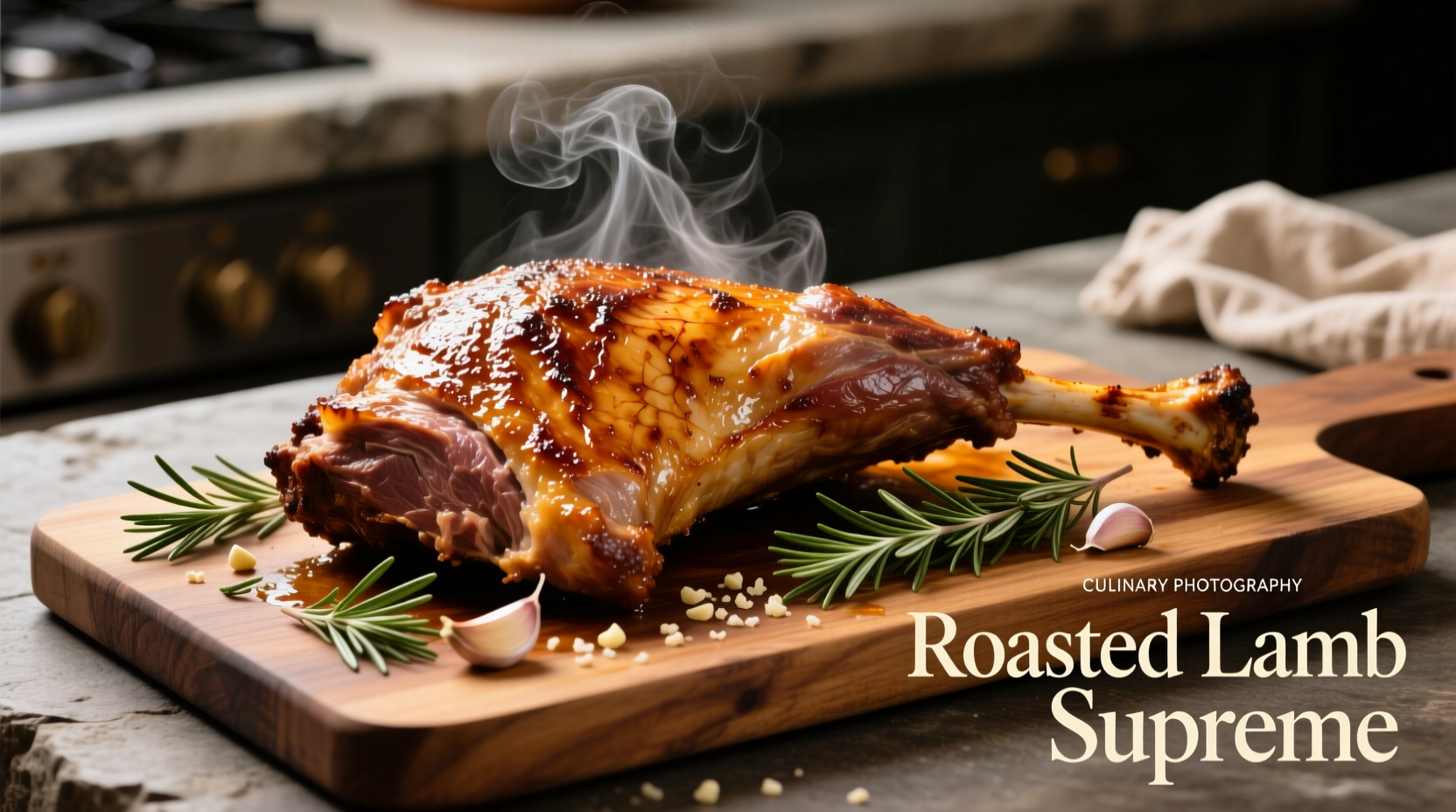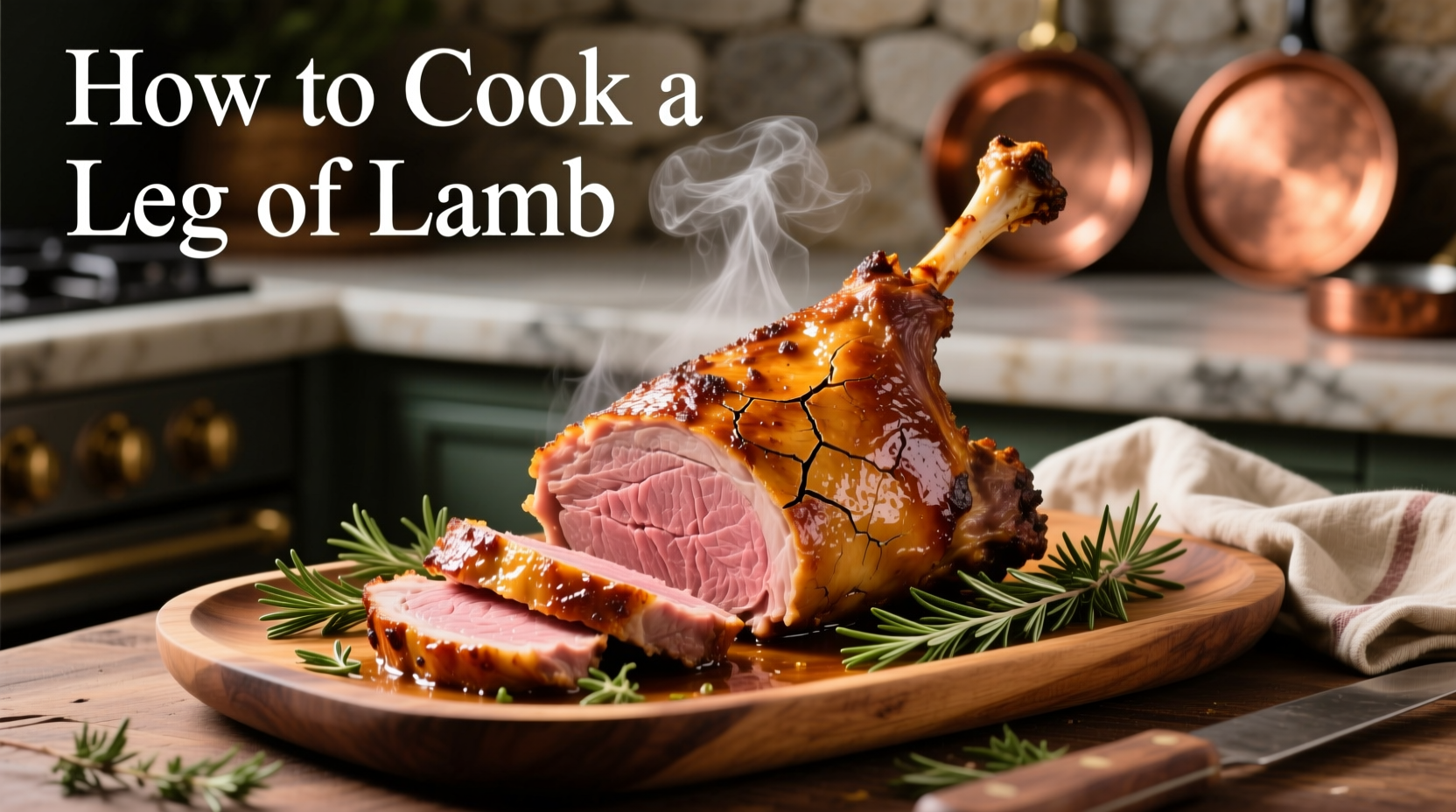Mastering leg of lamb requires understanding its unique structure and fat distribution. Unlike other cuts, this large, bone-in roast benefits from slow, even cooking that renders fat while keeping meat succulent. Following USDA Food Safety and Inspection Service guidelines, lamb should reach a minimum internal temperature of 145°F (followed by a 3-minute rest) for food safety, though many chefs prefer 130-135°F for medium-rare perfection.
Choosing Your Leg of Lamb
Select a leg weighing 6-8 pounds for even cooking. Look for bright red meat with firm, white fat deposits - this indicates freshness and proper aging. The USDA Agricultural Marketing Service confirms that lamb labeled "prime" features the highest marbling, though "choice" grade offers excellent value for home cooks. Bone-in roasts retain moisture better than boneless versions, making them ideal for beginners.

Preparation Essentials
Allow your lamb to reach room temperature (about 1 hour) before cooking. Create 12-15 shallow incisions across the surface, then insert slivers of garlic and fresh rosemary. For optimal flavor penetration, combine this with a dry brine: rub 1 tablespoon kosher salt per 5 pounds of meat 24 hours before cooking. This technique, validated by research from the Culinary Institute of America, enhances both flavor and texture through protein breakdown.
Cooking Method Comparison
Two reliable approaches yield exceptional results:
| Method | Temperature | Time (6-8 lb) | Best For |
|---|---|---|---|
| Slow Roast | 275°F (135°C) | 2.5-3 hours | Even cooking, minimal monitoring |
| High-Heat Finish | 450°F (230°C) for 20 min, then 325°F (160°C) | 2-2.5 hours | Crisp exterior, juicy interior |
Precision Temperature Guide
Invest in an instant-read thermometer for accuracy. Insert it into the thickest part, avoiding bone. The American Lamb Board recommends these final temperatures after resting:
- Rare: 120-125°F (internal will rise to 125-130°F)
- Medium-rare: 130-135°F (ideal for most palates)
- Medium: 140-145°F (USDA minimum safe temperature)
- Well-done: 160°F+ (not recommended - dries easily)
Critical Resting Period
Never skip resting! Tent loosely with foil and allow 20-30 minutes before carving. This crucial step, documented in On Food and Cooking by Harold McGee, lets juices redistribute throughout the meat. Cutting too soon releases precious moisture onto your cutting board rather than staying in the meat.
Carving Technique
Position the leg with the shank bone pointing away from you. Slice perpendicular to the bone in 1/4-inch thick portions. For presentation, cut between muscle groups following natural seams. A sharp carving knife ensures clean slices without tearing the delicate fibers.
Troubleshooting Common Issues
Dry meat: Usually caused by overcooking or insufficient resting. Always remove lamb 5-10 degrees below target temperature.
Uneven cooking: Rotate the pan halfway through roasting. For significant size variations, tent thinner sections with foil.
Bland flavor: Increase seasoning depth by making small incisions for herb paste rather than surface rubbing alone.
Perfect Pairings
Complement your lamb with:
- Roasted garlic mashed potatoes
- Honey-glazed carrots
- Mint jelly or red wine reduction
- Full-bodied red wines like Cabernet Sauvignon
Storage and Leftovers
Refrigerate leftovers within 2 hours. Sliced lamb keeps for 3-4 days in airtight containers. For best results when reheating, wrap portions in foil with a splash of broth and warm at 275°F until heated through. The Food Safety and Inspection Service confirms properly stored cooked lamb remains safe for up to 4 days.











 浙公网安备
33010002000092号
浙公网安备
33010002000092号 浙B2-20120091-4
浙B2-20120091-4